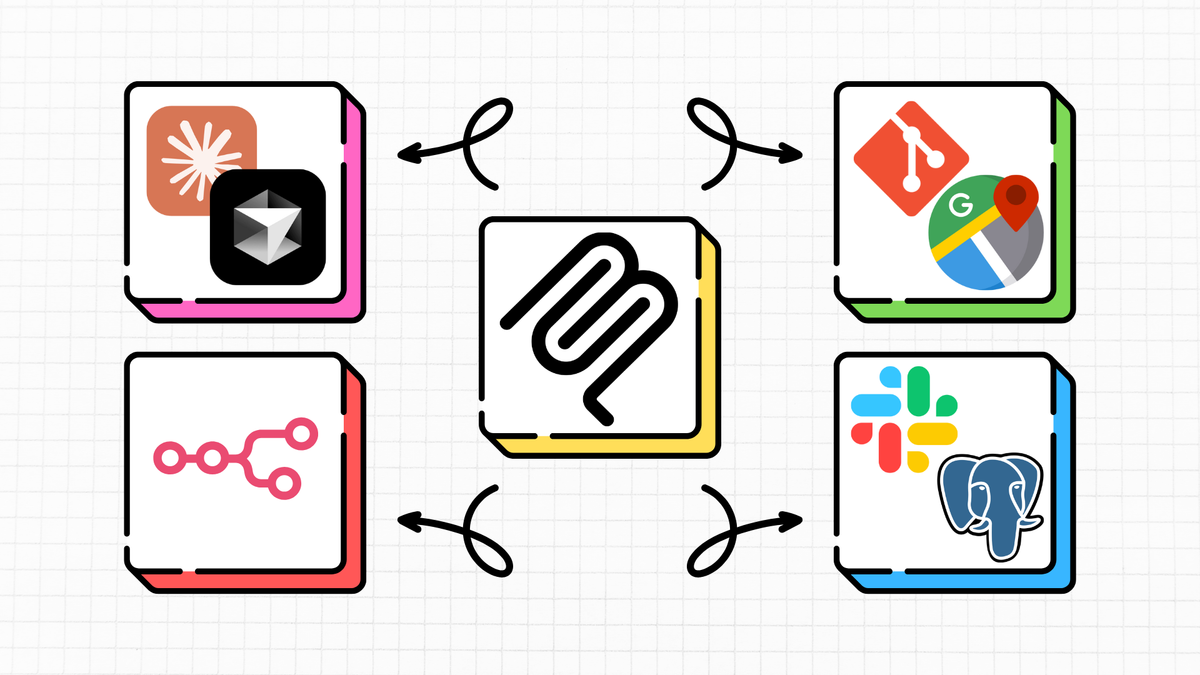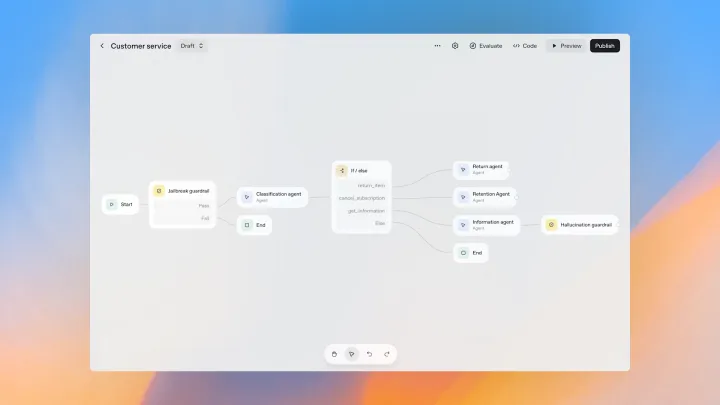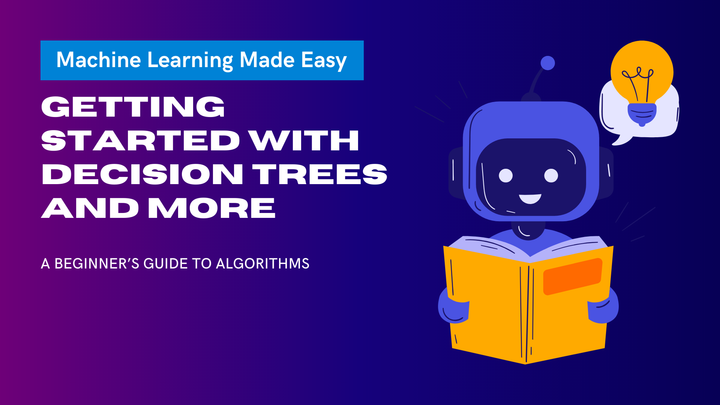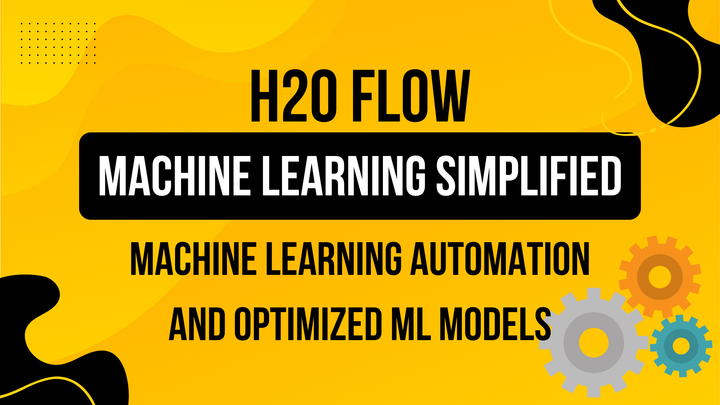Model Context Protocol (MCP) Servers & Clients: Deploying Your Own and Interacting via Claude Desktop, Cursor, and Windsurf

Introduction
The Model Context Protocol (MCP) is quietly revolutionizing how artificial intelligence (AI) tools interact with the world outside their sandboxes. If you’ve ever wondered how modern AI-powered assistants, coding agents, or research tools can suddenly fetch real-time data, edit files for you, or automate tasks—all in a secure, flexible way—it’s likely that MCP is at work beneath the surface. But what exactly is MCP? How do servers and clients fit into the picture? More importantly, can a regular person deploy their own MCP server and link it up with familiar tools like Claude Desktop, Cursor, or Windsurf?
This blog post breaks it all down in beginner-friendly language. You’ll learn what an MCP server and client actually are, why this protocol matters, and—step by step—how to set up your own local MCP server. We’ll also show you how to connect it to popular tools and cover real-world use cases, security basics, and troubleshooting tips. Even if you’re not technical, you’ll see that deploying MCP is more accessible than you think.
What Is Model Context Protocol (MCP)? Plain English Overview
Imagine the USB-C port on your laptop. Just as it lets you plug in a vast range of gadgets—charging cables, monitors, hard drives—MCP provides a universal port for connecting AI tools to all sorts of external information and capabilities.
MCP is an open standard protocol (originally by Anthropic, now adopted across the AI industry) that provides a standardized way for AI models and applications to securely, efficiently, and flexibly access data, run tools, or interact with other systems. It’s what enables an AI assistant to summarize your PDFs, edit code, schedule meetings, or automate tasks using outside systems—all without custom one-off integrations for each new tool.
Why Does This Matter?
Before MCP, every AI tool needed its own unique cable: lots of custom integrations, updates, and security headaches. Now, with MCP, any developer can build a single reusable connector (an MCP server) for their tool or service, and any AI host (like Claude, Cursor, or Cascade in Windsurf) can instantly discover and use it. This modularity means endless flexibility, reduced cost, and better security.
What Kinds of Things Can MCP Help With?
- Allow an AI assistant to read or write files locally or in the cloud
- Fetch up-to-date data from a company database or web API
- Automate repetitive workflows (e.g., creating calendar invites, Jira tickets, GitHub issues)
- Control software or hardware—potentially even IoT devices!
And all these can be mixed and matched as easy-to-plug-in modules.
MCP Architecture: Hosts, Clients, and Servers Explained
To understand how everything fits, let’s break down the main players in the MCP ecosystem:
1. MCP Host:
This is the “home base” where you interact with the AI. Examples: Claude Desktop app, Cursor IDE, or Cascade inside Windsurf.
The Host:
- Runs the AI model or agent
- Manages which Clients are active (sort of like “hiring” translators for each external service)
- Handles user prompts and displays results
2. MCP Client:
The “translator” or messenger bridging your host and some external tool.
The Client:
- Talks directly to an MCP Server, using MCP-specified messaging (JSON-RPC)
- Converts host requests into language the server understands
- Manages only a single connection per server, but the host can have many clients running at once
3. MCP Server:
The “doer,” often a lightweight program—might be local or running remotely—that provides capabilities for the AI to use.
The Server:
- Advertises its available “tools” (actions), “resources” (data), and optionally “prompts” (preset tasks)
- Listens for client requests and executes them
- Typically focuses on a single area: e.g., accessing local files, managing calendar events, running weather queries, etc.
Simple analogy:
- You (the user at the Host) tell your trusted AI assistant (Client) to get something done.
- The Client acts as the translator and messenger to a specific Server (the expert for that job).
- The Server completes the request and passes results back.
MCP Protocol & Messaging: Simple, Secure, and Extensible
MCP’s communication runs on top of JSON-RPC 2.0, a simple, predictable messaging format.
- All requests and responses are structured as JSON objects, making them human-readable and easy to debug.
- Transport mechanisms: Most common are
stdio(local tools: communicate over standard input/output), andStreamable HTTP(for remote/cloud tools, often with SSE—server-sent events).- Local servers (run right on your computer) often use
stdio, making setup simple for personal tools. - Remote/cloud servers use HTTP(S) with OAuth for secure, multi-user access.
- Local servers (run right on your computer) often use
Flows are bidirectional, but always initiated by the host.
- The host requests a list of tool capabilities when connecting.
- The user triggers (via prompt or action) a tool, passing parameters.
- The client (in the host) translates everything into a standardized MCP message, sends via the chosen transport to the server, and relays the result back.
Security and permission models are built in. For example:
- Claude Desktop or Cursor ask the user for approval before running tool calls (such as reading a file or accessing a calendar), so you’re always in control.
- Dense logs, authentication tokens, and strict separation between reading data (“resources”) and acting on the world (“tools”) keep things safe and trackable.
What Are the Benefits of MCP? Why Should You Care?
- Plug-and-play AI integration: No more writing new connectors for every tool. If a service offers an MCP server (or you build/wrap one for it), you can easily add new capabilities to any compliant AI host.
- Security and governance: MCP allows fine-grained permissions, centralized logging, and approval flows. This is critical for sensitive applications in business, finance, or healthcare.
- Future-proof and open: It’s model-agnostic and cross-vendor, already supported by leaders like OpenAI, Anthropic, Microsoft, and Google, as well as newer coding tools/IDEs.
Use case examples:
- Developers can expose internal APIs or data to AI coding assistants for smart autocomplete, bugfix suggestions, and workflow automation.
- Researchers can plug in a literature database or search engine for instant summaries or citations.
- Enterprises can connect CRM systems, ticket trackers, or cloud DevOps tools for agent-driven automation with full auditability.
Prerequisites for Deploying a Local MCP Server
The simplest, most beginner-friendly scenario is running an MCP server locally on your device (like your laptop or desktop). Here’s what you’ll need:
- A host application that supports MCP, such as Claude Desktop, Cursor, or Windsurf/Cascade.
- Node.js installed (for many ready-to-go MCP servers)
- Or Python with the
fastmcpormcpSDK if you want to build your own server in Python. - (Optionally) [For cloud servers:]
- An HTTP(S) endpoint, API tokens/keys, or Docker support for advanced use cases.
No need for deep programming skills for the most common use cases.
Ready-made servers for file access, web search, database queries, and more can be installed with a few simple steps!
Step-by-Step: Deploying Your Own Local MCP Server
1. Install Required Software
a. Node.js Server (for Filesystem or JavaScript tools):
Download and install Node.js LTS version from nodejs.org.
b. Python Server (for document processing, data science, etc.):
Install Python 3.9+ (pre-installed on many systems), and optionally pip or a fast dependency manager like uv.
2. Clone or Install a Sample MCP Server
Option 1: Local File Access with Node.js Filesystem Server (super easy, no code required)
- This is what Claude Desktop or Cursor will launch to enable file system access.
Install it globally with Node.js:
npx -y @modelcontextprotocol/server-filesystem /Users/yourname/Desktop /Users/yourname/Downloads
Replace the paths with the directories you want the AI to access.
Option 2: Build a Simple MCP Server in Python Using FastMCP
- This exposes a simple add tool to any MCP-compatible client.
Run the server:
python myserver.py
Create a basic myserver.py:
from fastmcp import FastMCP
mcp = FastMCP("My Demo Server")
@mcp.tool
def add(a: int, b: int) -> int:
"""Adds two numbers."""
return a + b
if __name__ == "__main__":
mcp.run() # defaults to stdio for local testing
Install the FastMCP SDK:
pip install fastmcp
(Or: uv pip install fastmcp if using UV).
Option 3: Ready-made Node.js Servers with Extra Features
- Many open-source MCP servers add special tools (web search, weather, Notion, GitHub, and so on).
Find and install them using NPM or directly from repositories.
3. Configure Your Host App (Claude Desktop, Cursor, or Windsurf) to Connect to Your Server
Here’s where all major apps are similar—you configure a JSON file that lists which MCP servers to launch and how to connect to them:
Claude Desktop:
- Go to the menu bar → Settings → Developer → Edit Config.
- Paths must be absolute! Restart Claude Desktop.
Edit (or create) claude_desktop_config.json:
{
"mcpServers": {
"filesystem": {
"command": "npx",
"args": ["-y", "@modelcontextprotocol/server-filesystem", "/Users/yourname/Desktop", "/Users/yourname/Downloads"]
},
"my-python-server": {
"command": "python",
"args": ["/absolute/path/to/myserver.py"]
}
}
}
Cursor IDE:
- Cursor supports simple UI-driven setup for adding most servers.
Open ~/.cursor/mcp.json for global tools, or .cursor/mcp.json in your project.
{
"mcpServers": {
"my-python-server": {
"command": "python",
"args": ["/absolute/path/to/myserver.py"]
}
}
}
Windsurf/Cascade:
- Paste your configuration, save, and refresh Windsurf.
Open ~/.codeium/windsurf/mcp_config.json.
{
"mcpServers": {
"n8n-mcp": {
"command": "npx",
"args": ["n8n-mcp"],
"env": {
"MCP_MODE": "stdio"
}
}
}
}
For cloud/HTTP servers:
Often, instead of command and args, you’ll specify a serverUrl (e.g., "serverUrl": "https://myserver.com/mcp") and provide authentication.
4. Restart the Host Application
To pick up configuration changes, fully quit and re-launch Claude Desktop, Cursor, or Windsurf.
- Look for a “hammer” or “plug” icon to confirm MCP servers are active.
- In Claude, click the hammer to see available tools for each server.
That’s it—you’re ready to interact with your local MCP server through your favorite AI assistant!
Interacting with Your MCP Server in Claude Desktop, Cursor, or Windsurf
Claude Desktop
- Actions are initiated by plain language (“Write a poem and save it to my Desktop.”).
- Claude will request permission before making file or tool changes and show you which server/tool will be used.
- Watch for the hammer icon for tool listing. Deny any action you’re not comfortable with!
Cursor
- MCP tools show up under “Available Tools” in the Composer Agent panel.
- You can ask the AI in chat, “Analyze all .py files in the project folder,” and Cursor will route requests to the right MCP server.
- Settings allow you to toggle each tool, set “auto-run,” or require per-use approval.
Windsurf (Cascade)
- MCP servers appear as “Plugins.”
- Enable/disable from the plugin manager or via the raw config.
- Cascade can automatically chain tools for agentic workflows—“Query my database, update Notion, and send a Slack message”—often in one prompt.
Sample Use Cases
- Save, move, or search files on your machine
- Query a local database, or interact with web APIs
- Scrape a web page, process a PDF, or summarize a folder’s contents
- Automate project management tasks across Jira, Linear, Notion, GitHub, etc.
Quick Table: Claude Desktop vs Cursor vs Windsurf for MCP
| Feature / Capability | Claude Desktop | Cursor | Windsurf (Cascade) |
|---|---|---|---|
| Setup Process | Edit JSON config, restart | UI-based or JSON config | CLI/manual config or plugin |
| Platform Support | Windows, macOS; Linux soon | Windows, macOS, Linux | Windows, macOS, Linux |
| Tool Discovery/Enable | Hammer menu, per-server | Tool list in Composer panel | Plugin list/manager |
| Local Server Support | Yes, simple (stdio, Node.js/Python) | Yes (stdio, HTTP, OAuth) | Yes (stdio, HTTP, plugins) |
| Remote/Cloud Server | Yes, with JSON config | Yes, serverUrl in JSON | Yes, serverUrl in JSON |
| Tool Approval | Always asks (unless auto) | Can require approval/auto | Plugin-level, sometimes auto |
| Chaining/Agentic Workflows | Basic (per tool call) | Yes, in Composer/agent | Yes, with Cascade agent |
| Security/Audit | Request-by-request, logs | Request logs, tool panel | Plugin approval, logs |
| Troubleshooting | Log files, dev tools | Inspector, tool status | Plugin logs, Inspector |
| Pricing (2025) | Free | Free/Pro ($20/mo, 500 reqs) | Pro ($15/mo, 500 reqs) |
Detailed Comparison:
- Cursor is generally more user-friendly and supports “auto-run” for power users, as well as providing advanced context management and diff mode for code edits.
- Windsurf is praised for its speed, agentic automation, and persistent memory, with a steeper learning curve but better batch task execution for technical teams.
- Claude Desktop is extremely simple for local tool access with “ask for permission” on everything—great for security, but less convenient for complex dev workflows.
Building More Advanced MCP Servers
You can extend your basic server to integrate with:
- APIs: Pull weather, stock, or project information (use
requestsin Python ornode-fetchin JavaScript) - Databases: Add a connection, then expose tools to execute parameterized queries
- Custom automations: Chain multiple steps (read file, process data, upload result)
- Cloud deployments: Run your MCP server on AWS, Azure, or Google Cloud and secure with OAuth2.0
Security Best Practices for MCP Servers
- Restrict permissions: Only expose directories, APIs, or functions that are truly needed; never broadly grant system-level access.
- Require explicit user approval for critical actions: deleting files, modifying records, or using sensitive credentials.
- Never log tokens, passwords, or private information: Log to
stderrfor diagnostic use, not standard output (which can break the MCP protocol). - Keep dependencies updated: Vulnerabilities in open-source libraries or outdated MCP SDKs can expose your system.
- Review third-party MCP servers: Only run or install servers from reputable sources and review their permissions/scopes.
Key risk areas include prompt injection, token theft, privilege escalation, and supply-chain risks.
Troubleshooting and Debugging MCP Servers
Common setup issues:
- Hammer icon or tool panel isn’t showing up?
- Double-check your config file paths (must be absolute), restart host application, and ensure Node.js/Python are on your PATH.
- Server not running?
- Try running it in your terminal to catch startup errors.
- Tool errors or action failures?
- Check logs: use
tail -f ~/Library/Logs/Claude/mcp*.logon macOS or%APPDATA%\Claude\logs\mcp*.logon Windows for Claude Desktop. - MCP servers must only log to
stderrto avoid breaking protocol communication (never useconsole.log()in Node.js/JavaScript MCP servers for logs, useconsole.error()instead).
- Check logs: use
Advanced debugging:
- Use [MCP Inspector][49†modelcontextprotocol] (a GUI tool) to connect to your server and simulate tool/resource calls without needing to involve an AI host.
- Chrome DevTools (in Claude Desktop) or built-in tool logging in Cursor and Windsurf provide granular diagnostics.
- Automated unit tests are recommended for production MCP servers.
Security Considerations
- Always run untrusted MCP servers in isolated environments (VM or container) if possible.
- Never expose sensitive file directories or credentials in configuration.
- Carefully review server logs for unauthorized or unexpected tool usage.
- Utilize built-in approval flows: verify and approve every external data/action request.
- Rotate API tokens and review tool permissions regularly.
- Monitor for updates or vulnerabilities in the SDKs and server modules you use.
Real-World Comparison: Claude Desktop vs Cursor vs Windsurf for MCP Workflows
Let’s recap the real-world feedback and test results:
- Claude Desktop:
- Best for file access and "human-in-the-loop" scenarios.
- Requires user confirmation for every tool call (safer, sometimes less convenient).
- Linux support is still catching up.
- Cursor:
- Loved for UI simplicity, integrated tool management, auto-run settings.
- Advanced context and memory possible, great for programming and complex project automation.
- More accurate in multi-tool workflows, better for developer productivity, but has a premium cost.
- Windsurf:
- Command-line oriented for power users.
- Faster basic tasks and agentic modes; best for batch automation.
- Some setup steps are less beginner-friendly, but offers most flexible automation for those willing to tinker.
Conclusion: Making MCP Work for You
Model Context Protocol brings plug-and-play extensibility to the new era of AI. Now, any user—not just enterprise developers—can securely extend their AI assistants using MCP servers, opening up a world of automation, connectivity, and data-driven intelligence.
- Start simple: Try the built-in Filesystem Server in Claude Desktop to let your AI interact with files.
- Grow as you experiment: Add new servers in Python or Node.js for APIs, document processing, or workflow automation.
- Use MCP Inspector and your client’s tool panels to debug and monitor.
- Prioritize security: limit what’s exposed, require confirmations, and audit tool calls.
As more tools adopt MCP, you'll have an ever-growing ecosystem of capabilities at your fingertips—just as easily as plugging in a USB-C device.
You now have everything you need to start experimenting with MCP and bring new superpowers to your favorite AI tools!



Comments ()